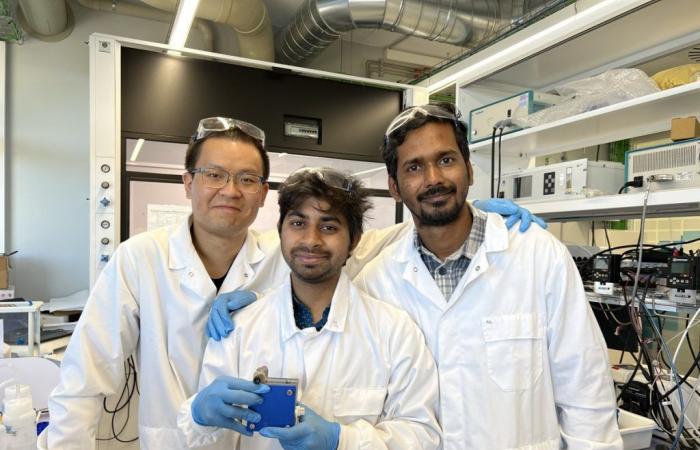Hydrogen is emerging as a promising chemical and energy vector to decarbonize our society. Unlike conventional fuels, the use of hydrogen as a fuel does not generate carbon dioxide. However, the majority of hydrogen produced today comes from methane, a fossil fuel, through a process known as methane reforming, which generates a substantial amount of carbon dioxide emissions.
Water electrolysis is presented as a viable solution to generate green hydrogen, using renewable energy and clean electricity. This process needs cathode and anode catalysts to accelerate water decomposition and recombination reactions into hydrogen and oxygen, respectively.
To date, water electrolysis—and in particular PEM technology—has required catalysts based on scarce and rare elements, such as platinum and iridium. These compounds are some of the few that combine the activity and stability necessary in the harsh chemical environment imposed by this reaction. However, Iridium is one of the rarest elements on Earth.
Advance
In the search for solutions, a multidisciplinary team of scientists has taken a crucial step by developing a new way of conferring activity and stability to a catalyst without iridium, taking advantage of hitherto unexplored properties of water. The new catalyst achieves, for the first time, stability in the electrolysis of PEM water under industrial conditions without the use of iridium.
The team at the Institute of Photonic Sciences (ICFO), together with its collaborators, has devised a new approach in the design of catalysts without iridium, achieving activity and stability in acidic media using cobalt, a much more abundant and cheaper material. The process consists of a method of delamination that exchanges part of the material for watercreating a catalyst that is presented as a viable alternative to those based on iridium.
To obtain this catalyst, the team worked with cobalt-tungsten oxide (CoWO4). They designed a delamination process in basic aqueous solutions, removing tungsten oxides and replacing them with water and hydroxyl groups. This process can be adjusted to incorporate different amounts of water and OH- into the catalyst, which is then incorporated into the anode electrodes.
The researchers were able to evaluate the presence of trapped water and hydroxyl groups, and understand their role in the activity and stability of the catalyst for water decomposition under acidic conditions. This new knowledge allowed the team to work closely with experts in catalyst modeling, understanding how water-protected delaminated materials are not only thermodynamically protected from dissolution, but are also highly active.
Performance
The initial performance of the delaminated catalyst in a PEM reactor was notable, achieving a greater activity and stability than any previous work, reaching a current density of 1 A/cm² and more than 600 hours of stability. These results represent a big step towards producing green hydrogen without relying on scarce elements such as iridium.
The team has seen so much potential in this technique that it already have applied for a patent, with the goal of scaling production to industrial levels. However, they are aware of the challenges this entails. “Cobalt, although more abundant than iridium, remains problematic due to its origin. That is why we are working on alternatives based on manganese, nickel and other materials,” says Prof. García de Arquer.
Despite the challenges ahead, the team is convinced of the potential of this delamination process and are determined to continue moving in this direction. “I have always wanted to advance renewable energy because it will help our human community fight climate change. I think our studies have contributed a small step in the right direction,” concludes Ranit Ram, first author of the study.


